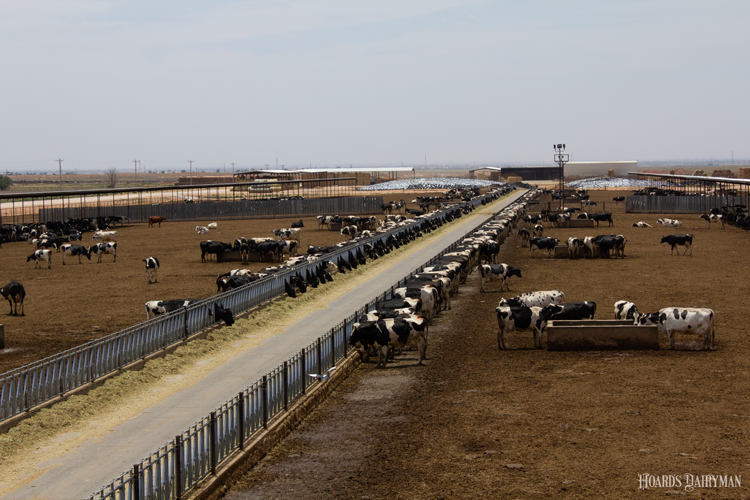
An unusual and concerning animal health situation is unfolding in and around the Texas Panhandle, and it is leaving more questions than answers.
Late last week, veterinary officials began more closely monitoring an unidentified illness that has been affecting dairy cattle in the area for a few weeks. Diagnostic tests to date have not revealed a clear case definition or cause.
A statement from the Texas state veterinarian of the Texas Animal Health Commission (TAHC) lists the following symptoms of the illness:
- Sudden drop in milk production, with some affected cows producing thicker, colostrum-like milk
- Sudden reduced feed intake
- Drop in rumination
- Abnormal tacky or loose manure
- Some fever
- Occasional secondary infections of clinical mastitis or pneumonia
Clinical signs are most often being observed in second lactation and greater cows that are more than 150 days in milk. Dry cows, heifers, and calves do not appear to be affected. Most cases have been reported in the panhandle of Texas, but dairies in Kansas and New Mexico have also reported animals with these or similar symptoms. Texas is home to approximately 642,000 dairy cows, fourth-most of any state in the country.
The illness has not led to high rates of death so far. Some cows are bouncing back to normal production levels after about three weeks, according to a release from the American Association of Bovine Practitioners (AABP). Reports indicate that other cows do not rebound in production, and these animals are more often being culled. Further complicating the situation is the fact that multiple, but not all, farms in the region have observed sick animals. Even on affected farms, only a relatively small share of the herd is showing symptoms. AABP indicates a disease rate of about 10%.
TAHC is collaborating with USDA to continue to monitor and evaluate this situation and is encouraging veterinarians to report affected animals to the TAHC Amarillo office or Texas A&M Veterinary Medical Diagnostic Laboratory. They advise collecting and documenting production information on any affected animals so testing can be done to uncover more details. TAHC is also encouraging an enhanced implementation of diligent biosecurity practices to limit the number of people on and off a farm’s premises.
This is all developing less than a month after Texas was ravaged by the largest wildfire in its history. More than a million acres of land were burned, and anywhere from 7,000 to possibly 10,000 beef cattle were killed. The Smokehouse Creek Fire also began in the state’s panhandle, but it is unclear if those conditions had any effect on the current illness. It has only been observed in dairy cattle so far, and there have been no reported cases outside of this region.
However, it is good practice for all dairy farmers to remain vigilant in observing potential symptoms in their animals and report any concerns to their veterinarian. Review your biosecurity practices, including monitoring who and what arrives at your farm and quarantining new animals.








